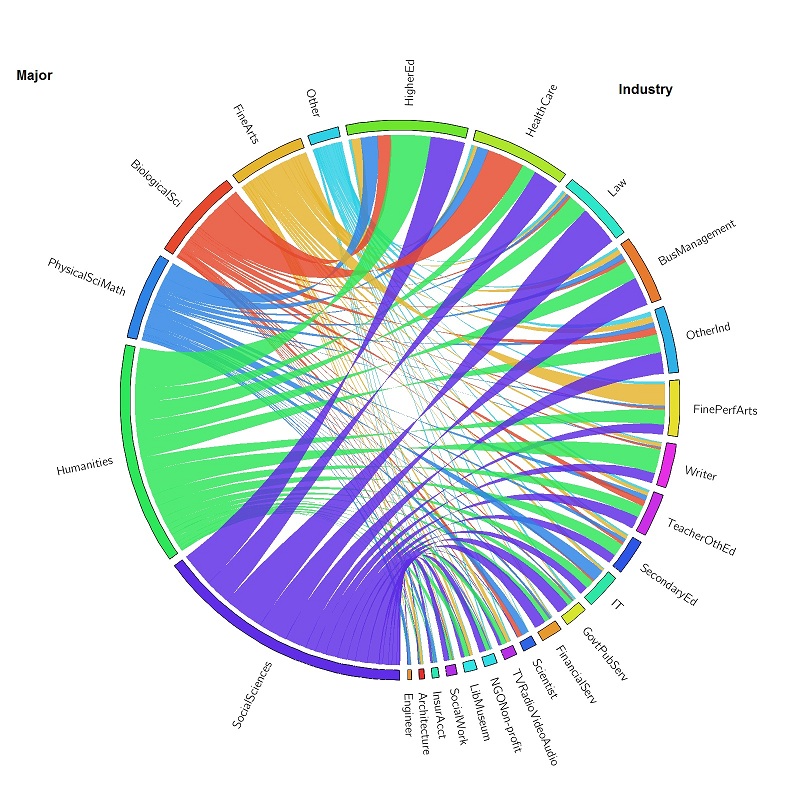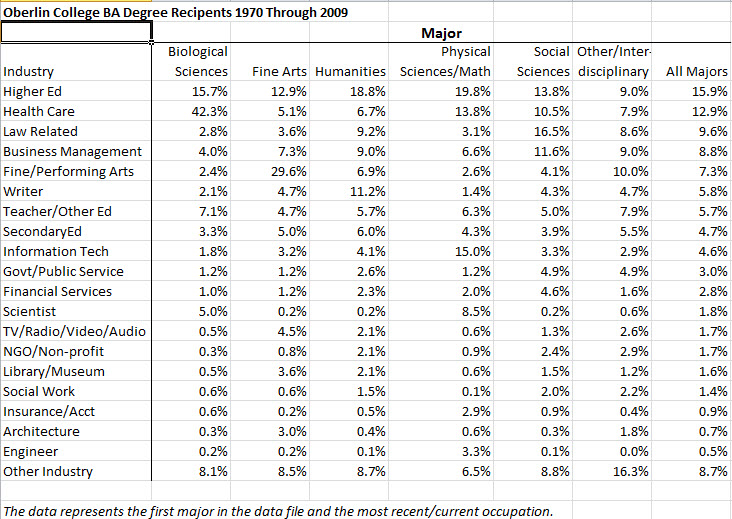Major to Career Pathways for Oberlin BA Recipients 1970-2009
The Liberal Arts are under attack (again) for not providing students with job skills. Even the White House is taking a vocational outcomes approach to higher education. Of course the nation needs a well-trained workforce but that is not the responsibility solely of vocational education, nor are the Liberal Arts incapable of producing individuals successful in their chosen occupations. Indeed, the hallmarks of a liberal arts education - critical and analytical thinking, adapting to change, lifelong learning, to name just three - are necessary to the existence of a successful society, including the workforce. Policy makers are fixated on training in fields that lead to specific occupations (certainly important) but at the expense of an education that prepares people for a variety of careers. We need to support both.
Using data from the Oberlin alumni system, I have created the chart below which I think provides a marvelous visual representation of the variety of fields our alumni are in and the majors that 'led' them to those fields. The population includes those graduating with the BA from 1970 through 2009. Presenting the data this way very quickly and forcefully shows the diverse pathways our alumni take and how the major is not necessarily a predictor of those pathways; graphically representing the old adage that Liberal Arts do not prepare you for one career, rather for many. We know this, but clearly policy makers and pundits need to be reminded. While post-baccalaureate education is in many cases part of the path, learning at Oberlin prepared alumni well for those experiences (our alumni consistently report that in graduate school they were better prepared than most others in their chosen program).
Moving your cursor (or finger on mobile devices) over the arcs representing the majors will isolate the pathways for those particular majors. While there are clearly patterns (Are we surprised that the plurality of people in the Health Care industry are Biological Sciences majors?) note that all industries have representatives from all majors.

Here is a tabular version of the data

The charts were made using a program called Circos (http://circos.ca) which was designed for genomic research. I must thank Oberlin Senior Robbie Yu for helping me install, understand and navigate the program. Much gratitude also to Gayle Boyer in the Career Center for her invaluable help with the code used to create this site.
Ross Peacock
Asst VP Institutional Research and Planning
rpeacock@oberlin.edu